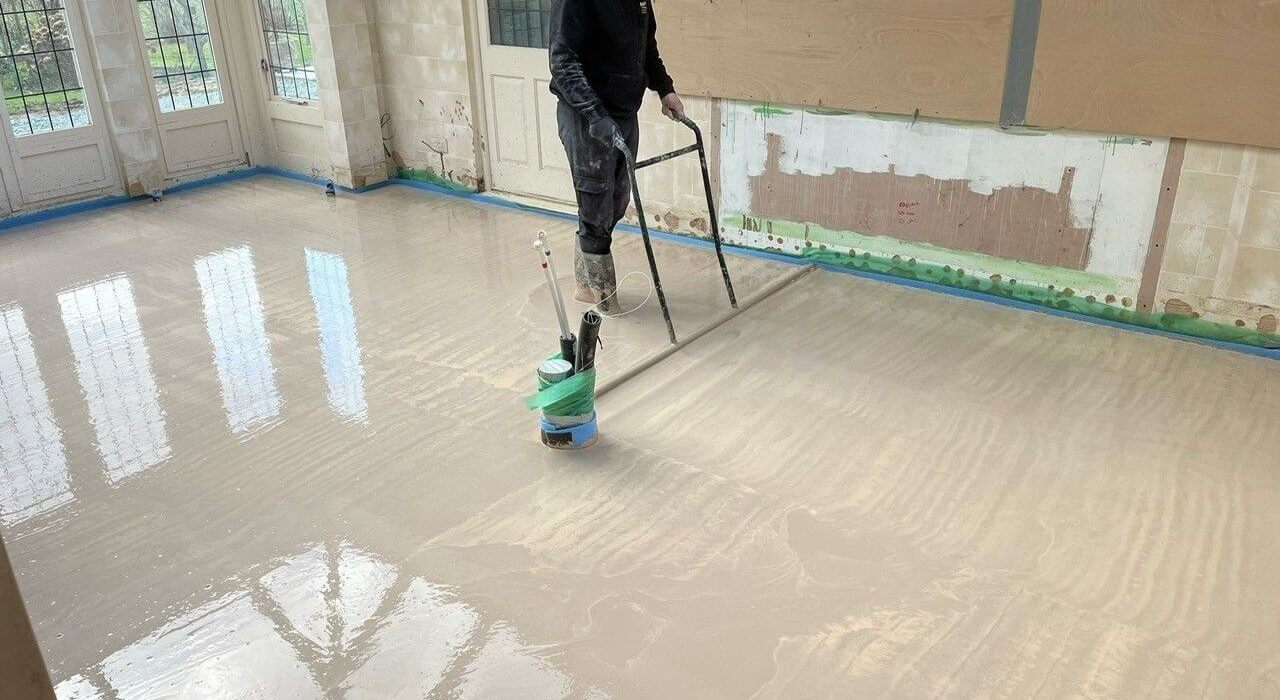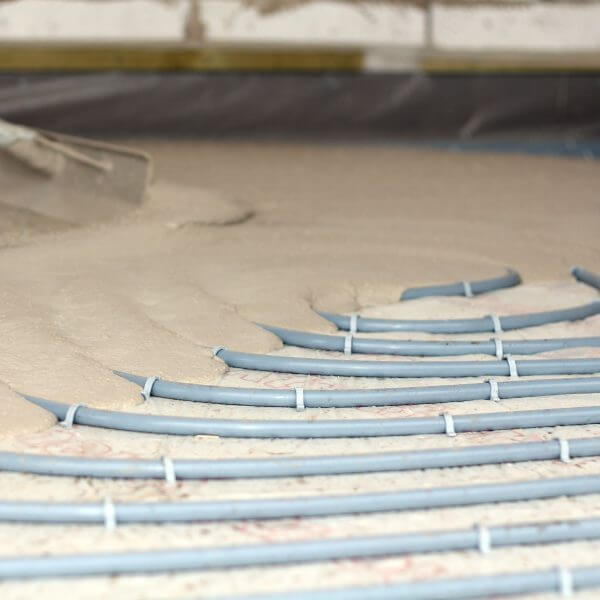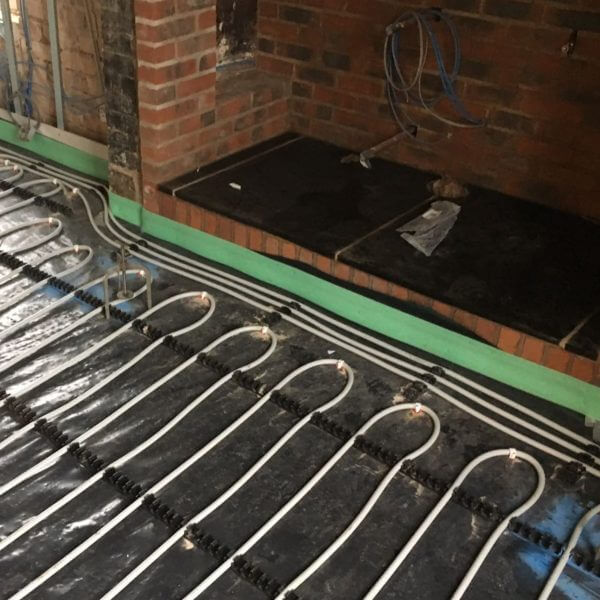How Long Before You Can Walk On Liquid Screed?
While it may be tempting to walk and build on liquid screed the moment it appears solid, it’s important to let it dry and cure sufficiently before you start putting pressure on it.
Be aware that certain conditions will affect liquid screed drying time. Cold temperatures and higher humidity will slow down the drying process, whereas hot and dry conditions will hasten it. Self-compacting concrete formulations can take longer to dry than their anhydrite counterparts, and are primarily used when drying conditions are suboptimal anyway. Airflow also affects the drying process, which is why you are recommended to keep windows and doors closed.
How Long Before You Can Walk on Liquid Screed?
Most liquid screed drying times take between 24-48 hours to cure before it is safe to walk on. During this time, it must be left untouched, with windows and doors kept shut until it is solid. Some fast-drying screeds will be walkable within 2-24 hours, depending on the thickness and the formulation used.
Walkable does not mean buildable, and you must avoid heavy traffic or the movement of heavy objects until it has had more time to dry.
How Long Before You Can Build on Liquid Screed?
If you want to build on the screed, it needs to be sufficiently dried for at least 7 days, depending on site conditions and the thickness of the screed. Thicker screeds or drying in colder conditions may need longer. The screed must be completely dry before installing the final floor finishes.
How Long for Liquid Screed to Dry Completely?
The average liquid screed drying time is at a rate of 1mm per day up to 40mm. Any depth above this will dry at a rate of 0.5mm per day. For example, if your liquid screed was laid at 50mm, it will be naturally dry in approximately 60 days.
You can speed up the drying process to minimise delays. Forced drying is where you utilise underfloor heating, space heaters or dehumidifiers to create ideal drying conditions. These should only be used after 7 days have passed and with the guidance of your screed installer. This is to minimise the likelihood of faults appearing in the screed. An underfloor heating system should only be used if you are recommended to do so by the installer. We do not recommend force drying without accurate instructions specific to your circumstances, as this can potentially damage the screed.
What Happens if You Don’t Let The Screed Dry in Time?
If there is still moisture left in the screed when you build on it, this can compromise its strength or integrity. The floor may crack, delaminate, ruin the flooring finish, or compromise the efficiency of an underfloor heating system.
This can cause costly delays and repairs, as you would need to remove the compromised screed and potentially start over from scratch. We highly recommend liquid screed moisture testing before advancing to building or laying flooring finishes to ensure it is sufficiently dry. EasyFlow can provide this service to provide you with an accurate reading of the moisture content.





Where To Find Us